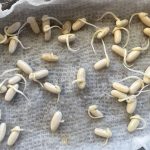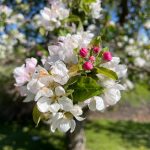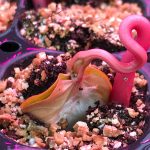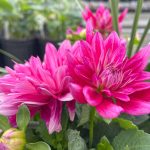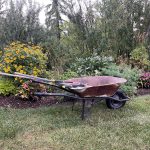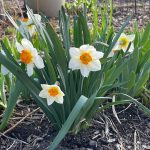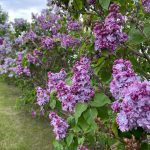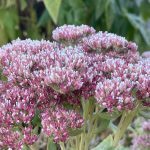If you’re looking to add elegance and sophistication to your garden, bell-shaped flowers are a perfect choice. Adding different shapes to your garden can also help your flowerbeds feel fuller.
With their delicate petals and unique shape, bell-shaped flowers will surely add charm to any garden.
In this post, I will introduce you to 10 stunning bell-shaped flowers that will enhance your garden and bring a smile to your face every time you see them.
Whether you’re a seasoned gardener or just starting out, these flowers are sure to impress!

Want the inside scoop on more gardening tips? Get early access to all my blogs and exclusive content by signing up for my newsletter!
Why Add Bell-Shaped Flowers to Your Garden

When it comes to creating a visually captivating garden, bell-shaped blossoms, with their distinct form, add a touch of grace, elegance, and whimsy reminiscent of tinkling bells swaying in the breeze. They also create a sense of enchantment and garden beauty that is hard to resist.
Bell-shaped flowers come in a variety of sizes, colours, and species, each possessing its own unique charm.
But bell-shaped flowers not only add visual interest to your garden, they also attract pollinators such as bees and butterflies because of the simplicity of their form.
Their unique shape and nectar-filled blossoms irresistibly invite these important creatures to your garden, ensuring a thriving, biodiverse ecosystem.
Tips for Adding Bell-Shaped Flowers to Your Garden Design
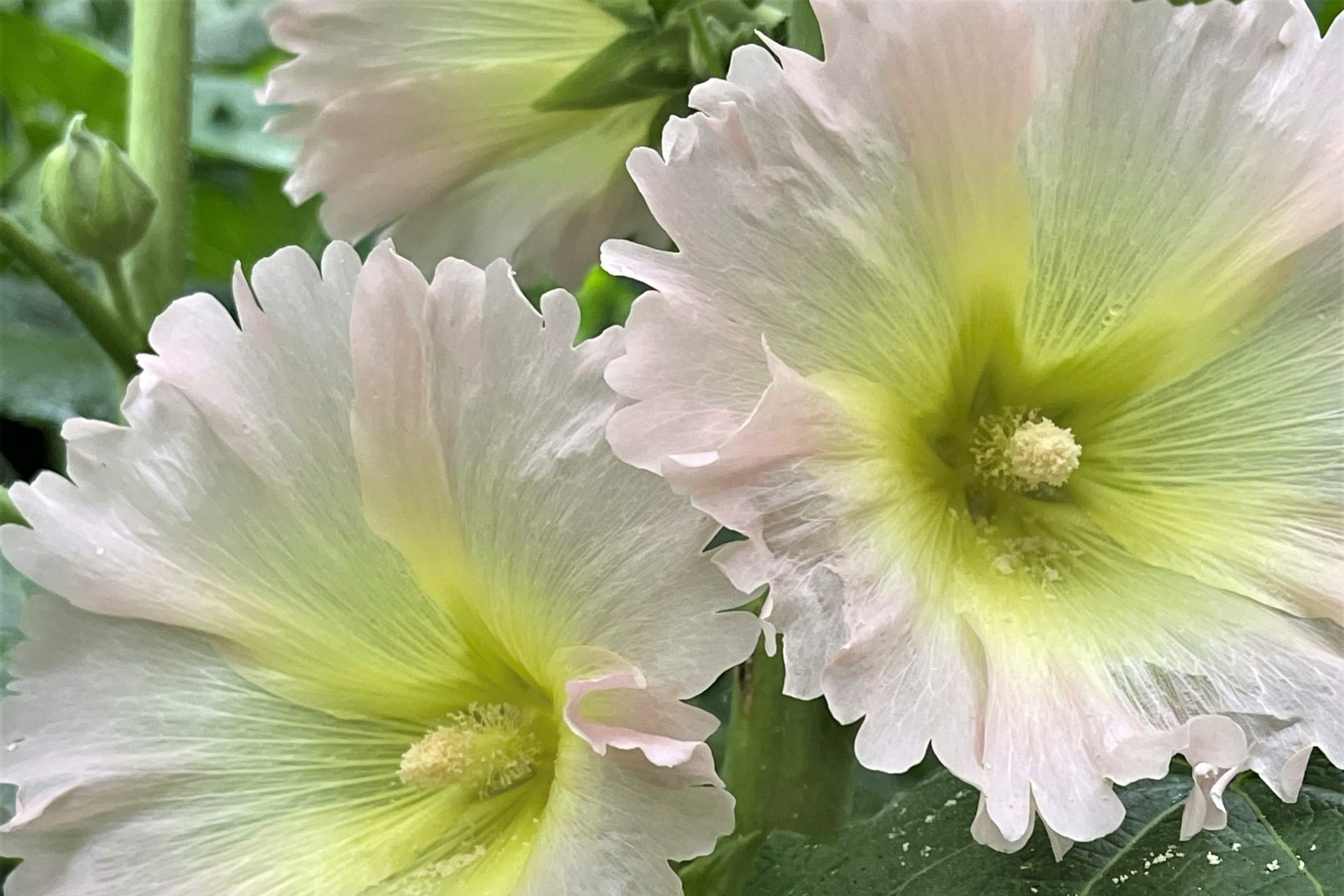
To get the most out of your garden and to maximize what bell-shaped flowers have to offer, consider these five factors before planting in your garden space.
Know Your Garden Plan
When it comes to placement, know your overall garden plan as you consider adding bell-shaped flowers to it. These type of flowers can be used as borders or edging along pathways to create a defined and polished look.
They can also be planted in clusters or arranged in mixed flower beds for a more natural and relaxed feel.
Additionally, hanging baskets or window boxes filled with cascading bell-shaped blooms can add a charming touch to balconies or patios.
Related: How to Plan and Design a Garden in 4 Simple Steps
Know Your Garden Growing Environment
Not all bell-shaped flowers thrive in the same growing conditions. Some may prefer full sun, while others thrive in partial shade.
It seems obvious, but be familiar with your garden climate. Know how the sun shines, how the wind blows, and how water moves through your garden.
Note where and when the sun shines directly on your garden space. Watch to see when the sun begins to give light, how many hours it stays, and when it becomes shady.
And lastly, know your plant growing zone, especially if you plan to grow perennials.
Having this information in your back pocket allows you to provide the appropriate growing conditions for your chosen bell-shaped flowers.
Related: Are you new to plant growing zones? Here’s more: What are Plant Hardiness Zones & How do They Work?
Consider Garden Colours

Look at your garden’s colour palette and choose bell-shaped flowers that complement the existing plants and overall theme.
Opt for soft pastel hues like pale pink, lavender, or creamy white for a serene and calming atmosphere.
If you prefer a more vibrant and energetic garden, choose bold, bell-shaped flowers in red, orange, or purple shades.

Want the inside scoop on more gardening tips? Get early access to all my blogs and exclusive content by signing up for my newsletter!
Think about the Height and Structure of Your Garden
Bell-shaped flowers can vary in size, from petite blossoms to larger, more grandiose blooms.
To create depth and visual interest, plant taller or climbing varieties at the back of flower beds or against fences and shorter ones towards the front.
Flowering Time
Consider the bloom time of the bell-shaped flowers as well. Some varieties may flower in the spring, while others may bloom in the summer or even into the fall.
By selecting a combination of different bloom times, you can craft a garden with a continuous display of bell-shaped beauties throughout the growing season.
10 Stunning Perennial Bell-Shaped Flowers for Your Garden
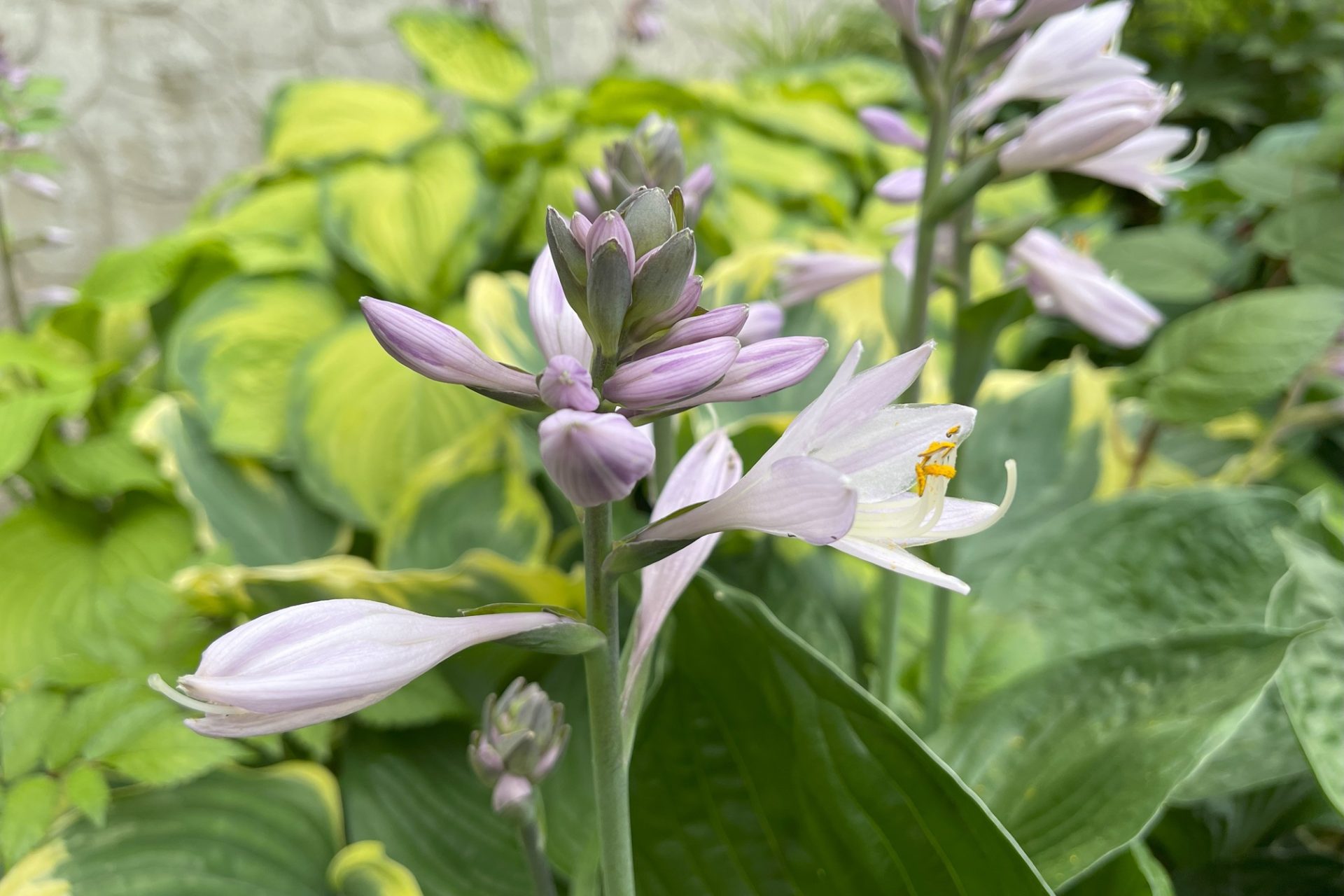
Here is a list of dazzling perennial bell-shaped flowers that will enhance your garden and make it a truly breathtaking sight.
1. Alcea (Hollyhocks)
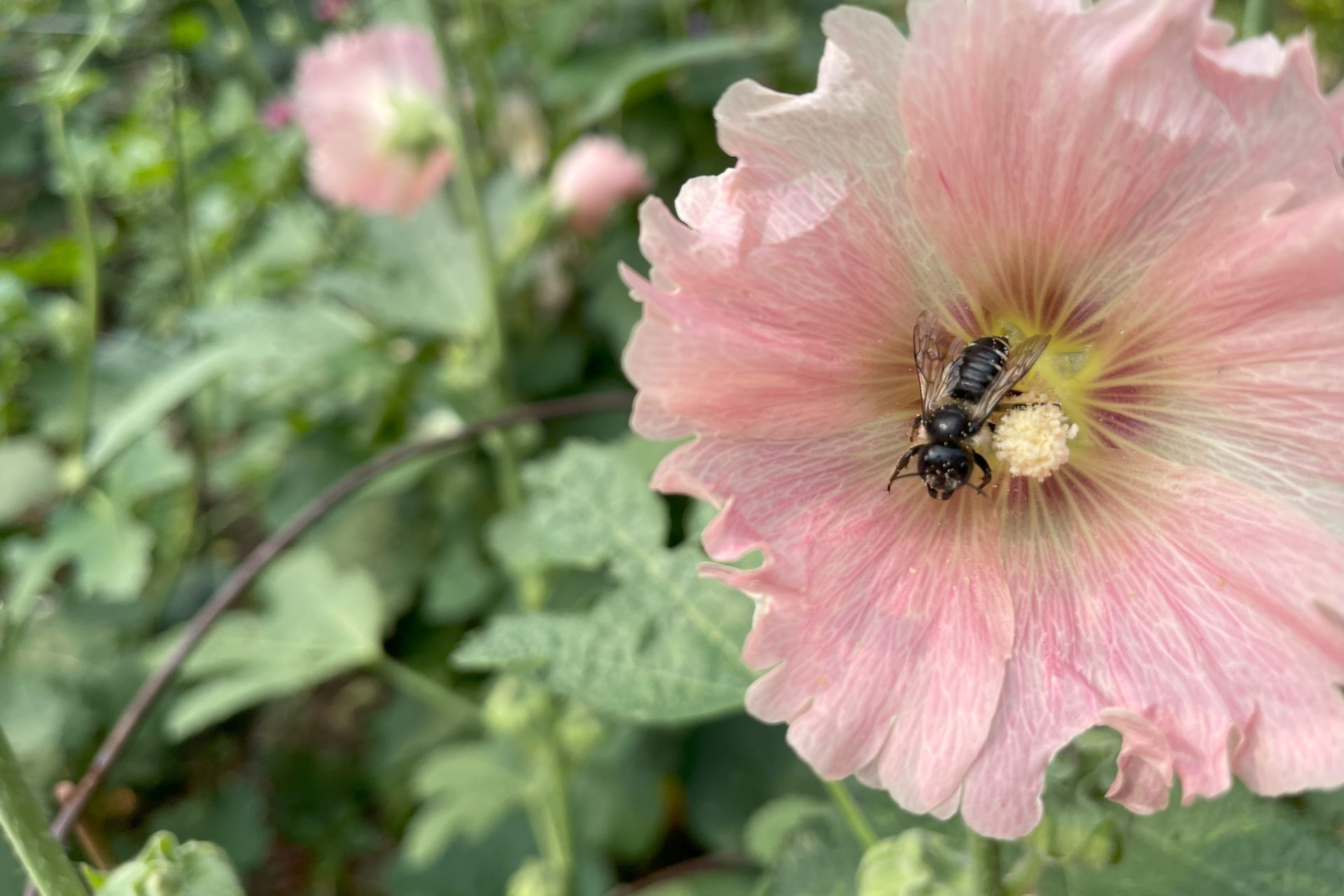
If you are looking to add a touch of old-fashioned charm to your garden, look no further than Alcea, commonly known as Hollyhocks.
Hollyhocks (Alcea) are biennial or short-lived perennial plants belonging to the Malvaceae family that can reach heights of 1-3m (3-9′).
They are known for their tall spikes adorned with large, open, cup-shaped, showy flowers in a kaleidoscope of colours—think pinks, reds, yellows, and purples—creating a striking visual impact in any garden.
Hollyhocks are not only beautiful but also beneficial! Their vibrant flowers attract bees, butterflies, and other pollinators, making them an excellent addition to any eco-friendly garden.
Hollyhock Growing Tips:
Plant Growing Zone: Hollyhocks thrive in Plant Growing Zones 3-9, making them a versatile choice for prairie gardens!
Sunshine Requirements: These beauties love the sun! Ensure they receive at least 6 hours of direct sunlight daily for optimal growth and blooming.
Soil Needs: Plant Hollyhocks in well-draining soil as they prefer loamy or sandy soils with good organic matter. Ensure your garden bed has excellent drainage to prevent root rot.
Watering: While Hollyhocks are relatively drought-tolerant once established because of their long tap roots, they appreciate regular watering during hot spells if it doesn’t rain.
Fertilizer: Feed your Hollyhocks with a balanced fertilizer (10-10-10, 20-20-20) when new growth appears in early spring. A nutrient-rich compost can also support healthy growth and abundant blooms.
Related: How to Understand Fertilizer Labels
Bonus Tips: Hollyhocks can self-seed, but they are not invasive, and their seedlings can be easily pulled out if they are not wanted.
Hollyhocks may also benefit from support like stakes or large tomato cages to keep their tall stalks upright, especially in windy conditions.
Related: How to Grow Healthy, Happy Hollyhocks, 8+ Ways to Manage Hollyhock Rust Infections
2. Aquilegia (Columbine)

Columbine is a perennial wildflower celebrated for its unique, bell-shaped, spurred blooms that dance on slender stems. The flowers come in a range of colours, including blue, purple, yellow, and white.
Their delicate, bell-shaped flowers typically bloom in spring and early summer, providing a beautiful display that attracts hummingbirds and butterflies early in the growing season.
Fun Fact: “Columbine” comes from the Latin word “columba,” which means dove. The flower’s shape is said to resemble doves perched together.
Aquilegia Growing Tips:
Plant Growing Zone: Aquilegias thrive in USDA Zones 3-9, making them versatile for many climates across Canada.
Sunshine Requirements: Aqueligias prefer partial shade. Ideally, they love 6 hours of sunlight daily, especially in cooler regions and appreciate an afternoon break from the hot sun.
Soil Needs: Columbines prefer well-draining soil enriched with organic matter. A loamy soil is ideal, but they can tolerate a range of soil types as long as drainage is adequate.
Watering: Keep the soil consistently moist but not soggy. Regular watering is essential, especially during hot, dry spells.
Fertilizer: A balanced, slow-release fertilizer (10-10-10) in early spring can give your Aquilegias the necessary nutrients. Avoid over-fertilizing, as they thrive best with moderate feeding.
Bonus Tip: Deadhead spent flowers to encourage continuous blooming throughout the season!
3. Campanula carpatica (Carpathian Bellflower/Clips)
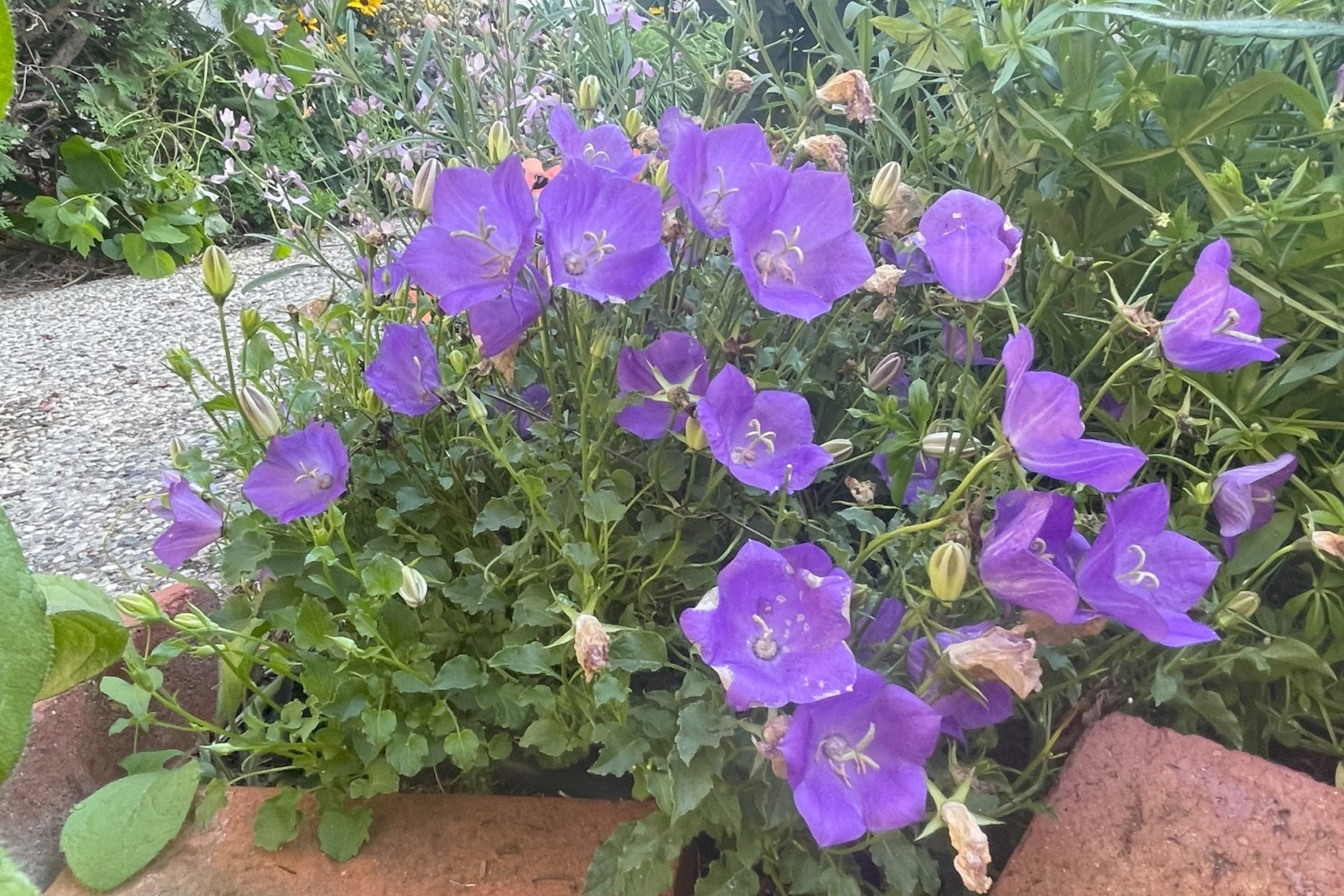
Campanula, commonly known as bellflowers, are a large group of perennial and biennial flowers. This section will focus on the Carpathian Bellflower, otherwise known as Clips.
Carpathian Bellflowers are perennial plants that form compact 20-25 cm (8-10″) mounds of heart-shaped leaves and produce an abundance of upward-facing bell-shaped flowers in shades of blue, purple, or white.
The blooms typically emerge in late spring to early summer, creating a beautiful display atop sturdy, low-growing foliage. They continue to flower if they are deadheaded.
These are an excellent flowering option that works well as ground cover, edging, or a feature in an alpine garden. Their spreading and clumping nature and long blooming period make them a versatile and reliable addition to a sunny garden.
Campanula carpatica Growing Tips:
Plant Growing Zone: Originating from the Carpathian Mountains of Eastern Europe, this plant is rated for Plant Growing Zones 3-9. It is well-suited to cooler climates but can adapt to a variety of conditions.
Sunshine Requirements: These beauties prefer full sun to partial shade. Aim for at least 6-8 hours of sunlight daily for optimal growth and blooms.
Soil Needs: Well-draining soils rich in organic matter work best. A loamy soil mix with good drainage is ideal for healthy root development and flower production.
Watering: Keep the soil consistently moist, especially during dry spells. However, be careful not to overwater, as Campanula prefers well-draining soil. Mulch helps to keep the soil moist.
Related: What is Mulch? Making Garden Magic with Mulch
Fertilizer: Feed your Campanula with a balanced, slow-release fertilizer (10-10-10) as new growth appears in the spring. Avoid over-fertilizing, which can lead to more foliage growth and fewer blooms.
Bonus Tip: Deadhead spent flowers to encourage continuous blooming throughout the season!

Want the inside scoop on more gardening tips? Get early access to all my blogs and exclusive content by signing up for my newsletter!
4. Clematis
Clematis is a versatile and hardy perennial vine known for its beautiful, vibrant flowers, which bloom in a range of colours, including purples, blues, pinks, and whites.

With hundreds of varieties, you can choose from early, late, or continuous bloomers, making it a fantastic choice for flower power throughout the entire growing season.
This climbing plant can reach heights of 2-6m (6-18″) depending on the variety and support provided. It’s perfect for trellises, arbours, fences, or even as ground cover in some cases.
Columbine Growing Tips:
Plant Growing Zone: Clematis thrives in Growing Zones 3-9, making it a versatile choice for many gardeners and regions of Canada.
Soil Needs: Well-draining soil is key. Clematis prefers slightly alkaline to neutral pH and loves loamy, rich soil.
Watering: Keep the soil consistently moist but not soggy. Water generously during dry spells, but be careful not to overwater. Mulch helps to retain soil moisture.
Fertilizer: Feed your Clematis with a balanced fertilizer in early spring and a second dose after the first bloom to promote healthy growth and vibrant flowers.
Pruning Tip: Different Clematis varieties require different pruning techniques, so check out the instructions for your specific variety.
Bonus Tip: Planting Clematis near other climbing companions (like roses or Honeysuckle) can create a harmonious and vibrant display!
To Dig Deeper: 5+ Clematis Varieties That Will Work in Alberta, A Step by Step Guide on How to Plan, How to Prune and Care for Clematis
5. Daffodils

Daffodils are easily recognizable early spring flowers with trumpet-shaped blooms and striking yellow or white petals. Each flower typically has a central corona surrounded by petal-like tepals, creating a stunning effect that brightens any garden.
Scientifically known as Narcissus, Daffodils hail from southern Europe, Northern Africa, and western Asia, with thousands of varieties.
Daffodils attract pollinators like bees and they are deer and rabbit-resistant, making them an excellent choice for more challenging garden areas.
Once you grow Daffodils, you’re almost guaranteed to enjoy a beautiful burst of colour every spring because they require minimal maintenance and adapt well to an extensive range of plant growing zones.
Daffodil Growing Tips:
Plant Growing Zone: Daffodils thrive in Zones 4-8, making them suitable for various climates.
Sunshine Requirements: These cheerful flowers prefer full sun to partial shade. Aim for at least 6 hours of sunlight each day to promote healthy growth and vibrant blooms.
Soil Needs: Daffodils are hardy, perennial bulbs that thrive in well-drained soil. A rich, loamy soil with good drainage is ideal for Daffodils. Incorporate organic matter like compost to enhance soil quality and nutrient content.
Watering: Daffodils enjoy well-drained soil, so water them regularly, especially during dry spells. However, be cautious not to overwater, as they dislike soggy roots!
Fertilizer: For optimal growth, use a balanced fertilizer (10-10-10) in early spring before blooming. A side dressing of compost in the fall can also boost nutrient levels.
Growing Tip: Once established, they are drought-resistant and can naturalize in gardens, returning year after year. After blooming, allow the foliage to die back naturally to replenish the bulb for the next season.
Notable Tip: Daffodils are toxic to animals, pets, and humans if ingested. Deer and rabbits naturally avoid them, and it is important to keep them out of the reach of curious pets and children.
Related: How to Grow Daffodils, The Ultimate Guide to Fall Bulbs in Canada
6. Digitalis (Foxgloves)
Digitalis is a stunning perennial known for its tall spires of up to 1.2m (4′) of unique tubular flowers, which bloom in late spring and early summer in shades of purple, pink, white, and yellow.
This plant not only adds a splash of colour to your garden but also attracts pollinators like bees, butterflies, and hummingbirds.
Foxglove Growing Tips:
Plant Growing Zone: Foxgloves thrive in Growing Zones 4-9, making them versatile for various climates across Alberta and Canada.
Sunshine Requirements: This biennial plant thrives in woodland clearings, meadows, and along shady paths. They’ll flourish with 4-6 hours of indirect sunlight each day.
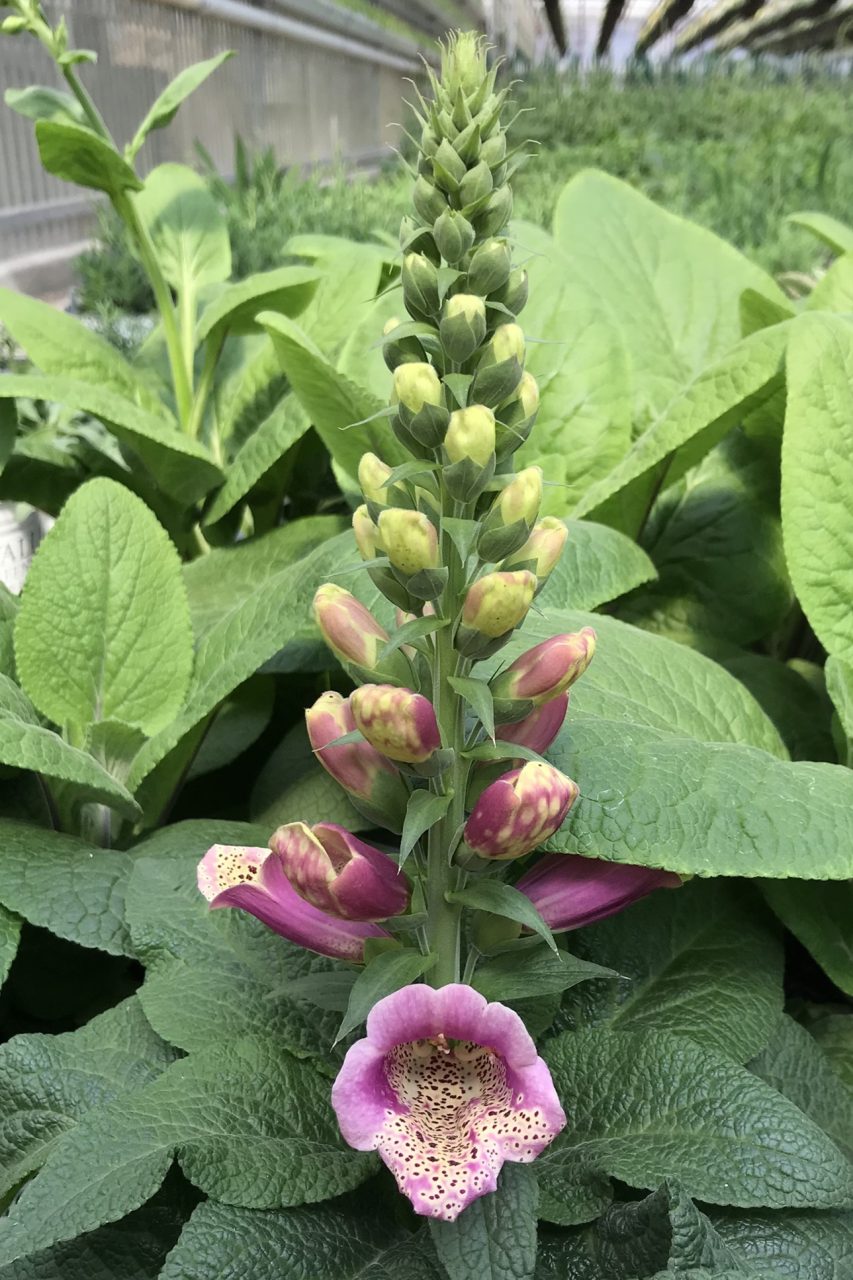
Sunshine Requirements: This biennial plant thrives in woodland clearings, meadows, and along shady paths. They’ll flourish with 4-6 hours of indirect sunlight each day.
Soil Needs: Foxgloves love rich, well-drained soil that is slightly acidic to neutral. A mix of organic matter, such as compost topped with mulch, will fuel their growth and help retain moisture.
Watering: Keep the soil consistently moist, but ensure good drainage! Water regularly during dry spells, especially if the plant is in a sunny spot, but avoid waterlogging.
Fertilizer: Feed your Foxgloves with a balanced, all-purpose fertilizer (10-10-10, 20-20-20) as they emerge in early spring. This will promote healthy growth and vibrant blooms.
Bonus Tips: To promote healthy growth, remove spent flowers regularly to encourage more blooms and support the plant’s overall vitality.
Foxglove can self-seed and spread quickly, so monitor their growth to keep them in check in your garden. The seedlings are not invasive and are easy to pull out.
Notable Tip: While Digitalis is breathtaking, handling it carefully is essential. Foxglove contains compounds like digoxin and digitoxin, which have been used to treat heart conditions, especially heart failure and atrial fibrillation. All parts of the plant are toxic if ingested and can affect the heart. Always keep it away from children and pets.
7. Heuchera
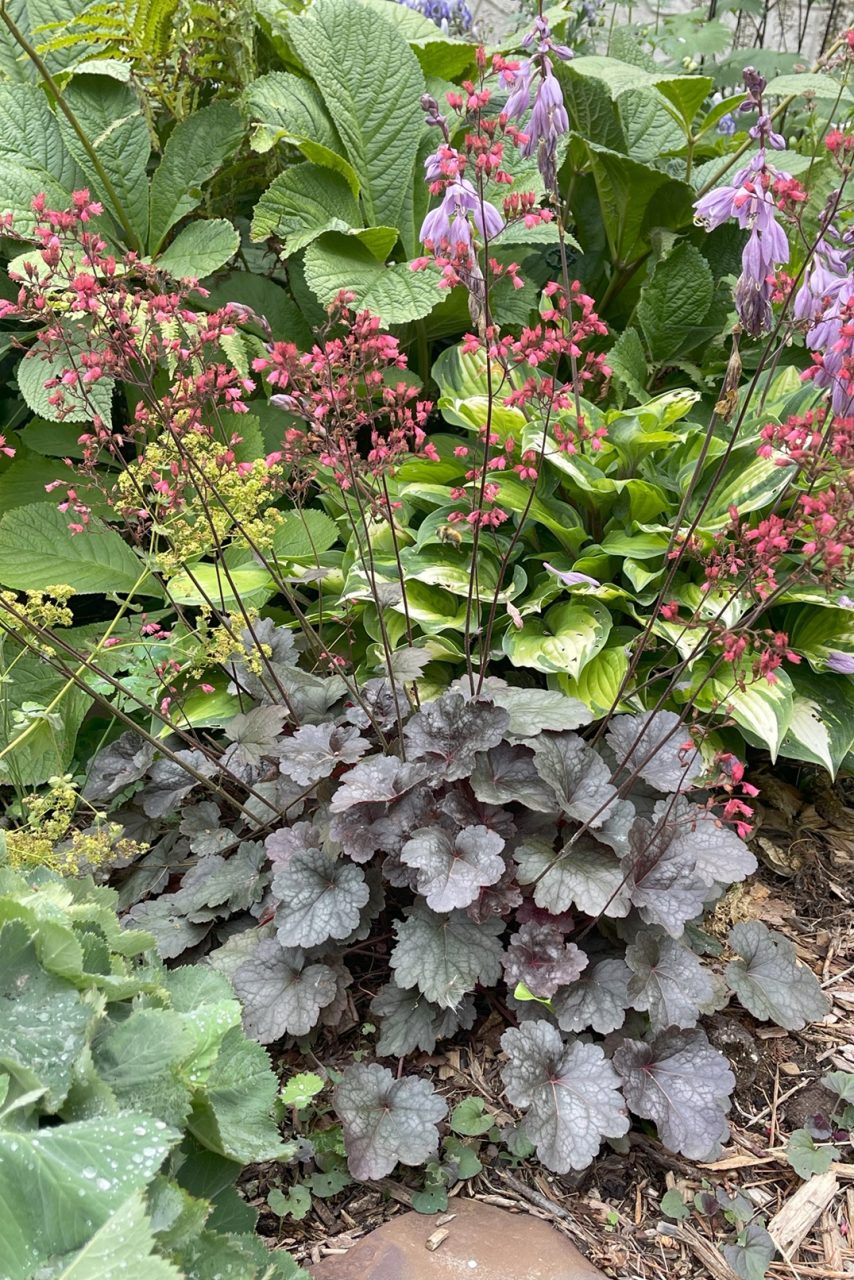
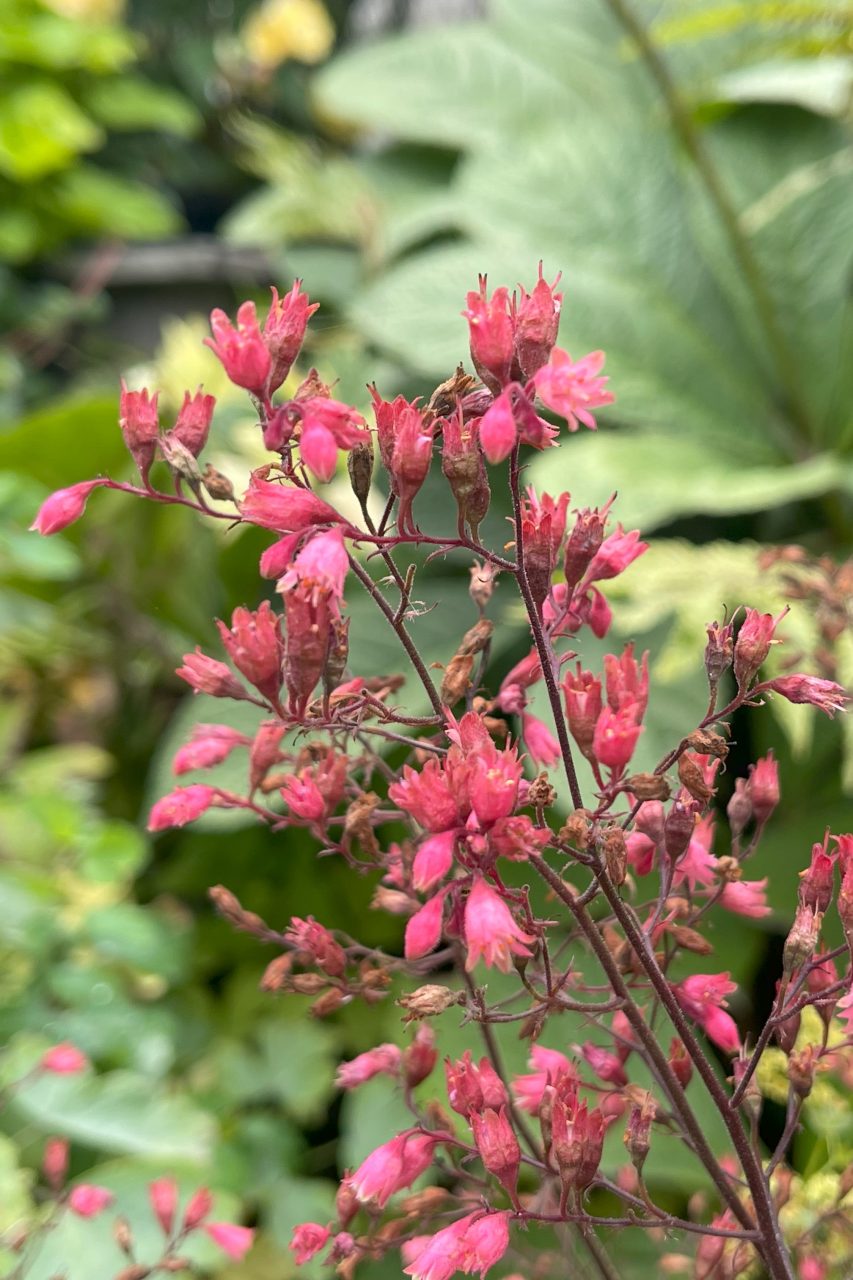
Heuchera, commonly known as Coral Bells, is a stunning perennial plant prized for its vibrant foliage and delicate, bell-shaped flowers.
Heuchera features rounded leaves in a variety of colours, including shades of green, coral, purple, red, and even silver. Its slender spikes produce tiny, bell-shaped flowers in late spring to early summer that attract pollinators, making it a favourite for borders, shade, and container gardens.
Heuchera (Coral Bells) Growing Tips:
Plant Growing Zone: Heuchera thrives in Plant Growing Zones 3-9, making it a versatile choice for various climates.
Sunshine Requirements: These beauties prefer partial shade to full shade, especially in hotter climates. Too much direct sunlight may scorch their leaves, so find a cozy spot with filtered light!
Soil Needs: Heuchera loves rich, well-drained soil. A mixture of loamy soil with organic matter will provide the nutrients they crave. They do well in slightly acidic to neutral pH levels.
Watering: Keep the soil consistently moist but not soggy. Water regularly, especially during dry spells, to ensure healthy growth. Well-drained soil is vital, and mulch helps retain moisture.
Fertilizer: Feed your Heuchera with a balanced, slow-release fertilizer (10-10-10) as it emerges in early spring to encourage lush growth and vibrant foliage. Be cautious not to over-fertilize, as this can harm the plant.
Bonus Tip: Heuchera is an excellent border, ground cover, or container gardening option. Pair Heuchera with ferns, hostas, or shade-loving perennials to create stunning garden displays that mix colours and textures.
These hardy plants are generally resistant to pests and diseases, making them a favourite for both novice and experienced gardeners alike.

Want the inside scoop on more gardening tips? Get early access to all my blogs and exclusive content by signing up for my newsletter!
8. Hosta
Hostas are perennial plants known for their lush, leafy foliage, bringing a lush, tranquil vibe to shady areas.

They come in a wide variety of sizes and colours, ranging from deep greens to vibrant yellows, chartreuses, and blues.
Their leaves come in many shapes, with solid or variegated colour variations and smooth or ribbed textures, adding texture and interest to any shady garden space.
Hostas are excellent for borders, shady spots, and even containers.
In addition to their gorgeous leaves, Hostas produce lovely spikes of tubular flowers in mid to late summer. These flowers can be lavender, white, or pale blue and are a favourite of pollinators, attracting bees and butterflies to your garden.
Hosta Growing Tips:
Plant Growing Zone: Hostas are ideal for Growing Zones 3-9 and thrive in a range of climates, making them a versatile choice for many gardens.
Sunshine Requirements: While Hostas prefer partial to full shade, some varieties, like ‘August Moon’, can adapt to full sunlight locations. Always check specific variety needs for optimal growth!
Soil Needs: Hostas do best in rich, well-drained soil. They thrive in loamy or sandy soil with good organic matter content to ensure nutrients are available.
Watering: Hostas grow best in consistently moist soil, and fortunately, shady soil stays moist, especially with the addition of mulch. However, Hostas may wilt in very dry spells and require deep watering.
Fertilizer: A balanced fertilizer (10-10-10, 20-20-20) in the spring can boost growth, but be cautious not to over-fertilize! Compost and mulch can also be a great natural option for providing nutrients.
Bonus Tips: Combine various Hosta varieties and with other shade-tolerant plants for a vibrant, multi-layered display. They pair beautifully with ferns, astilbes, and shade-loving annuals.
Deadhead Hostas, once they are done flowering to focus the plant’s energy on root development.
Although Hostas are low maintenance, monitor them for slug damage, as these garden pests often enjoy feasting on their tender leaves!
Related: How to Deadhead Hostas, 7+ Simple and Effective Ways to Get Rid of Slugs
9. Hyacinth

Hyacinths (Hyacinthus orientalis) are perennial plants known for their dense clusters of fragrant flowers.
Hyacinths come from the large Asparagaceae family, tracing their roots to areas of Turkey, the Mediterranean, neighbouring Syria, and Lebanon.
They typically reach a height of 15-30 cm (6-12″) and come in a variety of colours. Their thick, strap-like leaves emerge alongside the flower spikes, providing a lush green backdrop that enhances their beauty.
As one of the earliest spring flowers, Hyacinths provide nectar and pollen to bees, attracting them with their robust fragrance and bright flowers in pink, purple, red, and white hues.
Hyacinth bulbs are planted in the fall and are perfect for borders and rock gardens.
Hyacinth Growing Tips:
Plant Growing Zone: Hyacinths thrive in Plant Growing Zones 4-8.
Sunshine Requirements: These lovely flowers prefer full sun to partial sun. For the best blooms, aim for at least 6 hours of sunlight a day.
Soil Needs: Hyacinths need well-draining soil. They flourish in loamy or sandy soil with good organic matter, with a pH of 6.0 to 7.0.
Watering: Keep the soil moist but not waterlogged. Water your Hyacinths more during dry spells, but be mindful not to let them sit in water.
Fertilizer: Feed Hyacinths with a balanced fertilizer (10-10-10, 20-20-20) after planting and again when they start to grow. A high-potassium fertilizer (bone meal) can promote more vibrant blooms.
Bonus Tips: After flowering, allow the foliage to die back naturally, which helps nourish the bulb for next year’s blooms!
To Dig Deeper: How to Grow Great Hyacinths
10. Lonicera (Honeysuckle)
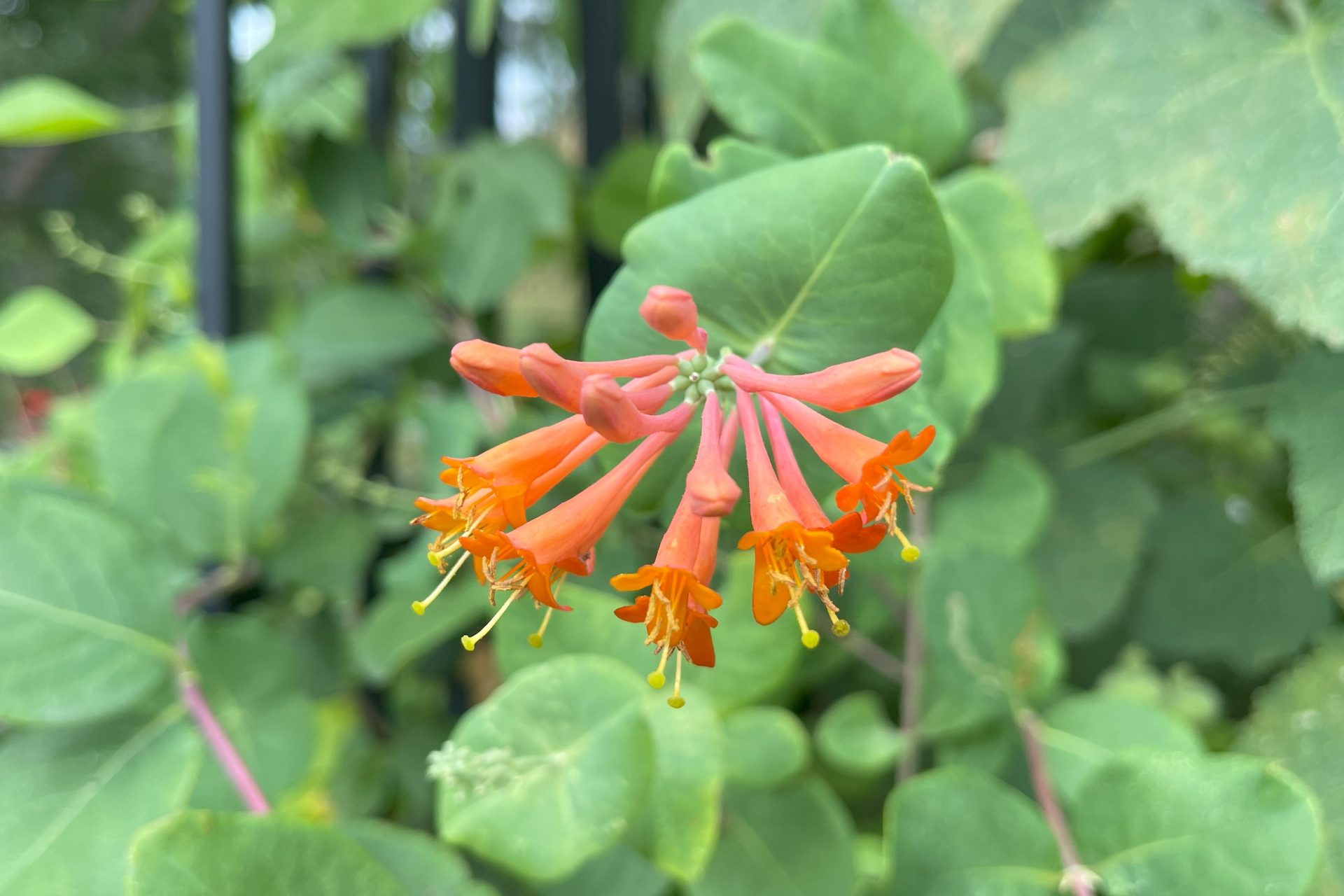
Honeysuckle, scientifically known as Lonicera, encompasses a wide variety of species, each offering its own unique charm.
From the classic Japanese Honeysuckle (Lonicera japonica) with its creamy white to yellow flowers that age into a beautiful orange hue to the captivating trumpet honeysuckle (Lonicera sempervirens) with its vibrant red blossoms, there is a honeysuckle variety to suit every gardener’s taste.
Lonicera produces long, narrow, tubular trumpet-shaped flowers, which are a favourite of Hummingbirds, butterflies, and bees.
Lonicera sempervirens, also known as the Honeysuckle vine or Trumpet Honeysuckle, is a noninvasive native to North America, which makes it an excellent pollinator garden plant.
The hardiest varieties for our climate are ‘Dropmore Scarlet’ and Mandarin, which are both rated for growing zones 3-9.
Dropmore Scarlet, which boasts orangey-scarlet flowers, was developed by Frank Skinner in Manitoba in the 1950s. Mandarin, with tangerine-orange flowers, is a cultivar introduced in 2003 by the University of BC.
In addition to its aesthetic value and enticing fragrance, Honeysuckle is also known for its versatility. It can be grown as a climber, gracefully adorning fences, trellises, and walls.
Honeysuckle Growing Tips:
Caring for Honeysuckle is relatively easy, making it an ideal choice for both experienced and novice gardeners.
Growing Zone: The hardiest varieties for our climate are ‘Dropmore Scarlet’ and Mandarin, which are both rated for growing zones 3-9.
Sunshine Requirements: Honeysuckles prefer a sunny location, although some varieties can tolerate partial shade.
Soil Needs: Plant Lonicera in well-draining soil as they prefer loamy or sandy soils with good organic matter. Ensure your garden bed has excellent drainage to prevent root rot.
Watering: Lonicera are relatively drought-tolerant once established, but they appreciate regular watering during dry spells.
Fertilizer: Feed your Honeysuckle with a balanced fertilizer (10-10-10,20-20-20) when new growth appears in early spring. A nutrient-rich compost can also support healthy growth and abundant blooms.
Bonus Tips: Their oval-shaped leaves grow from old wood on stems that can grow as long as 3-3.6m (10-12′), and their flowers come from new growth each spring, so don’t cut them back until they have finished flowering.
Few pests or diseases bother Honeysuckle. If grown in shady or partial shade, it is at increased risk of powdery mildew, and aphids occasionally bother it, which can be easily managed with a strong blast of water.
In conclusion, embracing the beauty of bell-shaped flowers in your garden is a surefire way to enhance its overall aesthetic appeal. These exquisite blooms possess a unique charm that captivates the senses and adds a touch of elegance to any outdoor space.
The List of Bell-Shaped Flowers Doesn’t Stop Here
The catalog of bell-shaped flowers is a full one, so don’t let your exploration stop here.
There are more perennial bell-shaped flowers to discover like Campanula medium (Canterbury Bells), Daylilies, Convullaria (Lily of the Valley), Dictamnus (Gas Plant), Perennial Geraniums, and more.
Adding bell-shaped flowers to your garden adds dimension, whimsy, and the practical benefit of attracting pollinators! If you are looking for more ideas on what to add to your garden or how to improve the overall health and beauty of your plants, subscribe to my newsletter for more tips!
Stay tuned for the upcoming blog on Annual Bell-Shaped Flowers to Add to Your Garden!
More to Explore
- The Best Annual & Perennial Flower to Grow in Your Zone 3-4 Perennial Garden
- 10+ Amazing Annual & Perennial Flowers to Grow in Full Sun
- The Best Smelling Flowers to Grow in Your Garden
- How to Master Your Shade Garden: A Complete Guide to Growing Annuals & Perennials in the Shade
- 4+ Great Fall Blooming Flowers for the Prairies
©Sharon Wallish Murphy ©Gardening with Sharon





